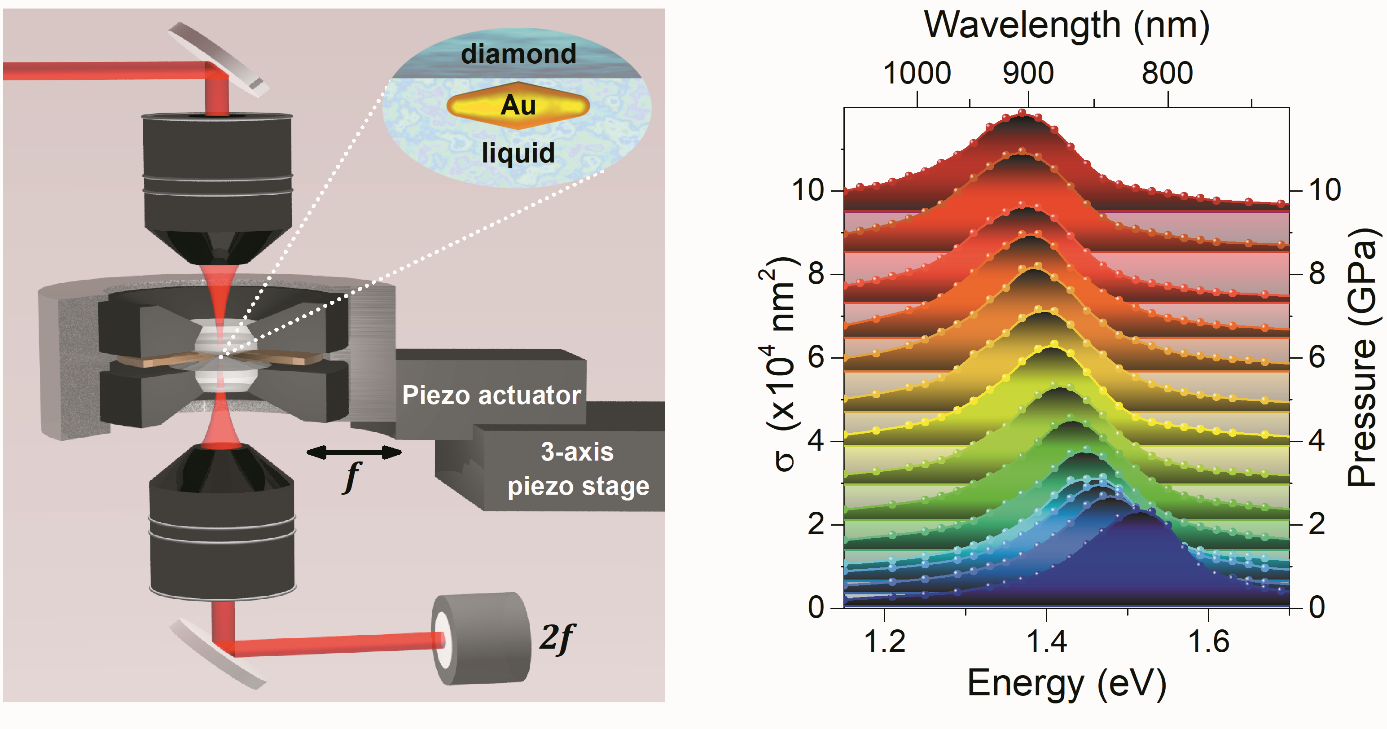
Quand une nanoparticule d’or rougit sous pression
When gold nanoparticles blush under pressure
Fabio Medeghini, Mike Hettich, Romain Rouxel, Sylvain Hermelin, Etienne Pertreux, Paolo Maioli, Aurélien Crut, Fabrice Vallée et Natalia Del Fatti (équipe FemtoNanoOptics) en collaboration avec Silvio D. Silva Santos, Abraao Torres Dias, Franck Legrand et Alfonso San Miguel (équipes SOPRANO et Energie) ont publié un article intitulé "High-pressure effect on the optical extinction of a single gold nanoparticle" dans la revue ACS Nano. Cet article a fait l'objet d'une actualité scientifique de l'INP.
Fabio Medeghini, Mike Hettich, Romain Rouxel, Sylvain Hermelin, Etienne Pertreux, Paolo Maioli, Aurélien Crut, Fabrice Vallée et Natalia Del Fatti (FemtoNanoOptics team) in collaboration with Silvio D. Silva Santos, Abraao Torres Dias, Franck Legrand and Alfonso San Miguel (SOPRANO and Energy teams) published a paper entitled "High-pressure effect on the optical extinction of a single gold nanoparticle" in the journal ACS Nano. This article was highlighted in a scientific news from INP.
Les auteurs ont mis au point la première méthode expérimentale permettant la mesure quantitative de l’absorption optique d’une nanoparticule individuelle sous conditions extrêmes de pression (~10 GPa). Cette expérience a nécessité l’élaboration d’une approche expérimentale originale, combinant la technique de « spectroscopie par modulation spatiale » laser (permettant de détecter optiquement un seul nano-objet) avec une cellule à enclume de diamant « miniature » réalisée sur mesure. Il a fallu relever des défis à la fois optiques et mécaniques, avant de pouvoir observer qu’une nanoparticule métallique … rougit sous l’effet de la pression, avec un décalage vers les grandes longueurs d’onde de sa résonance plasmon de surface sous forte contrainte mécanique. Ces travaux établissent un pont entre les domaines de la nano-optique et de la physique des hautes pressions, ouvrant ainsi une nouvelle voie pour l’étude quantitative de la réponse physique de nano-objets individuels sous contraintes mécaniques.
Authors have developed the first experimental method to quantitatively measure the optical absorption of an individual nanoparticle at very high-pressure (~10 GPa). This experiment was made possible by the development of an original approach, combining the "spatial modulation spectroscopy" technique (for single nanoparticle detection) with a "miniaturized" diamond anvil cell specifically tailored for these researches. Both optical and mechanical challenges had to be met before one could observe the effect of high pressure on the optical response of a single metallic nanoparticle, exhibiting a marked non-linear red-shift of its surface plasmon resonance. These works establish a bridge between the fields of nano-optics and high-pressure physics, opening a new way for the quantitative study of the physical response of individual nano-objects under mechanical constraints.


















